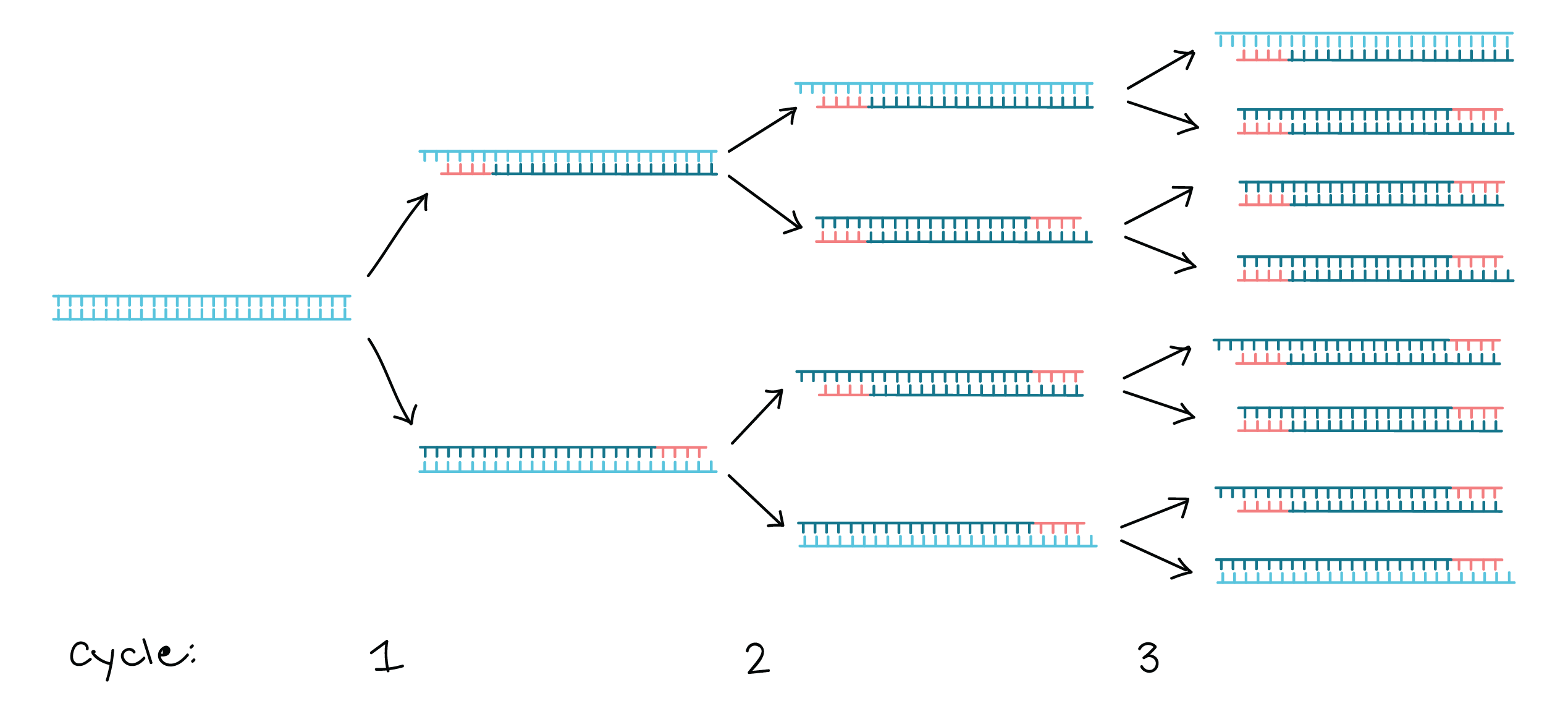I have been doing PCR for a while. I spared a bit of time to look it up but could not find an answer. So, for sanger sequencing, if we have a primer, it can amplify about 800-1000 bp. But, if you design a set of primers (forward and reverse) for PCR it will just amplify the target region. How does DNA synthesis from the forward primer stop when it reaches the point where the reverse primer is? How does the other primer which is binding to a different strand can stop the DNA synthesis in a complementary strand?
2 Answers
They don't stop replication. It's just that you replicate your dna in a number of cycles, let's say 30. after which you'll have a approximatly 10^6 molecules of the amplified region and only a few longer strands.
If you draw it out you'll see that your region of interest quickly start to dominate.
original strand
----/ /----ppp-------------------------/ /--
----/ /-----------------------qqq------/ /--
after one cycle
----/ /----ppp-------------------------/ /--
-------------------qqq------/ /--
----/ /----ppp-------------------
----/ /-----------------------qqq------/ /--
after two cycles
----/ /----ppp-------------------------/ /--
-------------------qqq------/ /--
ppp-------------------
-------------------qqq------/ /--
----/ /----ppp-------------------
----/ /-----------------------qqq------/ /--
----/ /----ppp-------------------
-------------------qqq
after three cycles
----/ /----ppp-------------------------/ /--
-------------------qqq------/ /--
ppp-------------------
-------------------qqq------/ /--
ppp-------------------
-------------------qqq
ppp-------------------
-------------------qqq------/ /--
----/ /----ppp-------------------
-------------------qqq
----/ /----ppp-------------------
----/ /-----------------------qqq------/ /--
----/ /----ppp-------------------
-------------------qqq
ppp-------------------
-------------------qqq
after four cycles
----/ /----ppp-------------------------/ /--
-------------------qqq------/ /--
ppp-------------------
-------------------qqq------/ /--
ppp-------------------
-------------------qqq
ppp-------------------
-------------------qqq------/ /--
ppp-------------------
-------------------qqq
ppp-------------------
-------------------qqq
ppp-------------------
-------------------qqq
ppp-------------------
-------------------qqq------/ /--
----/ /----ppp-------------------
-------------------qqq
----/ /----ppp-------------------
-------------------qqq
ppp-------------------
-------------------qqq
----/ /----ppp-------------------
-------------------qqq------/ /--
----/ /----ppp-------------------
----/ /-----------------------qqq------/ /--
----/ /----ppp-------------------
-------------------qqq
ppp-------------------
-------------------qqq
ppp-------------------
-------------------qqq
ppp-------------------
-------------------qqq
etc.
How does DNA synthesis from the forward primer stop when it reaches the point where the reverse primer is?
Briefly, it doesn't. You get a lot of single-stranded long pieces of DNA (step 1 here, notice the overhang ends). But the exponential part of PCR only amplified common overlapping regions in these long single strands, also known as your target region between Fwd and Rev primers (step 3)

